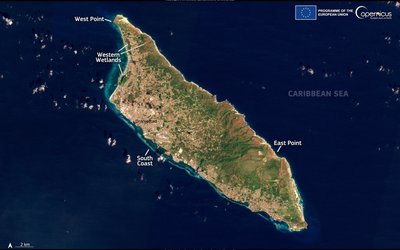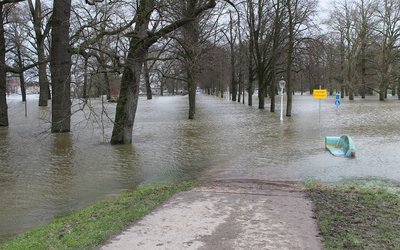Whether high or low flows of large rivers increase or decrease varies from one region to another
April 24, 2017

Photo: Tagus River near Lisbon (Pedro Ribeiro Simões, www.flickr.com)
Climate change will affect high and low flows of large rivers around the globe. To what extent extreme flows will change differs from one region to another. These changes have been assessed for five large rivers from three continents: two in Europe (Rhine at Lobith in the Netherlands, and Tagus at Almourol in Portugal), one in Africa (Niger at Lokoja), and two in Asia (Ganges at Farakka and Lena at Stolb). The assessment was made for the near future (period 2006-2035), mid-century (2036-2065), and end-century (2070-2099), compared with the reference period 1981-2010. Calculations were based on several climate and hydrological models, and both low- and high-end scenarios of climate change.
In this study high and extremely high flows were defined as the 10 % and 1 % highest discharges of all discharges in a certain period. Likewise, low flows were defined as the 10 % lowest discharges.
Results were most unambiguously for the Lena: an increase in high and low flows by most model combinations. Lena’s flow regime is strongly influenced by the accumulation and melting of snow and ice, and flows therefore are strongly influenced by the rise of temperature. According to the results of this study, the Rhine is the least sensitive to climate change of all five rivers.
High flows
Model projections indicate that high flows will increase for Lena and Ganges (up to 40 % and 100 % in 2100, respectively). A decrease of high flows was shown for the Tagus (up to −50 % in 2100), while trends for Niger and Rhine are highly uncertain. The Rhine shows the smallest expected changes in high flows (compared with the other rivers) (between ±15 %) in all climate change scenarios and future periods. The projected reduction of high flows for the Tagus follows the general reduction in precipitation over the region.
Overall, for high flows statistically significant trends were found for the end-century, high-end scenario of climate change. For near future and mid-century, and for the other (weaker) scenarios of climate change the trends were less clear.
Low flows
An increase of low flows was projected for Lena (more snow melt) and Niger (more precipitation), while a reduction was shown for Rhine and Tagus (up to −50 % in 2100). Results for the Ganges are quite uncertain. The reduction for the Rhine seems to result from the dominant effect of higher temperature (evapotranspiration) over a relatively minor increase in precipitation. The reduction for the Tagus is due to the projected decrease in precipitation.
Source: Pechlivanidis et al., 2017. Climatic Change 141: 467-481.








